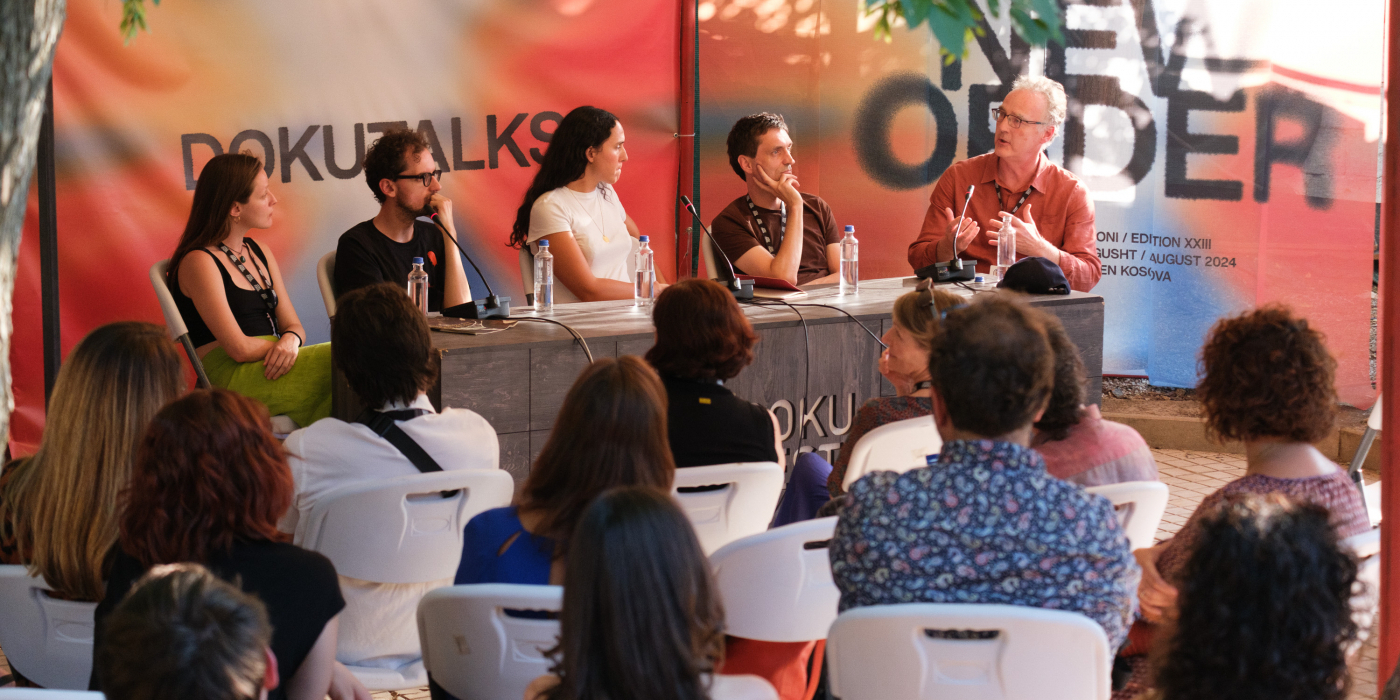05/08/2024
Gathered in the Shani Efendi Garden, in a peaceful moment filled with sunlight and contentment reminiscent of the calm before the storm, Jurij Meden, filmmaker of Alpe-Adria Underground and the current Head of Programming at the Austrian Film Museum in Vienna, cracked the first lightning that brought down the thunder. In a discussion about “Lost and Found: The Archivists Unearthing Images of the Past,” Jurij suggests that film archives will largely remain unexplored due to the incredible amount of existing material. He proposes the following: How about we stop unearthing the images of the past and stop trying to hold on to what can otherwise be forgotten?
The question of remembering and forgetting is crucial nowadays, especially with the current oversaturated visual landscape that further suffocates the possibility of building images of the future. Moderator Dea Gjinovci recognizes the disparity that exists in the Balkans on this matter compared to other countries in Western Europe. How should archiving be handled in the ever-so-complicated Balkan landscape?
Tevfik Rada, sociologist and researcher in the “Connecting Dots” program, involved in unearthing the Yugoslav Cinematheque to reveal Kosovo’s specific experience within the Yugoslavian cinema heritage, talks about the importance of looking at the bigger picture instead of focusing on bits and pieces. If we are to talk about Kosovo’s cinematic memory, it should not stop at uncovering and reclaiming Kosovar productions found within the Yugoslav Cinematheque; it should also extend to gathering all types of film articles, products, and other sorts of materials that help weave the complete political and artistic tapestry.
Ivona Djurić, another researcher in the “Connecting Dots” program, elaborates further on the matter of having Kosovar film material moved to Belgrade after the war. Faced with the challenge of exploring the entirety of the Yugoslavian Cinematheque for the project, Ivona focuses on more contemporary film images and the possibility of developing preservation methods with what already exists. In this rather alternative approach to tackling the Yugoslavian kinoteka matter, Ivona hopes to contribute to future research efforts on the post-war women filmmakers' landscape by providing an entry point to the topic through her work at “Connecting Dots.”
Adam Dawtrey, producer of Celluloid Underground which is part of the special “Ode to Celluloid” program, highlights the popular practice among current archival filmmakers of creating new stories using images of the past. In an activity that could be described as a real ecological gesture due to the intention of recycling and reusing images of the past, Adam calls for a careful approach to acts of erasure, which can also happen in today’s digital age: because everything is out there, nothing can be found.
While artists play an important role in fostering a real bridge between archivists and researchers, the financial hardships of uncovering existing archival material remain problematic. Despite these hardships, accessibility and ownership issues are also highly challenging, especially in countries with ongoing political turmoil. If one views film tapes as cultural artefacts, what is the value of recovering marginal film material from the central archives of disintegrated political conglomerates, such as Yugoslavia or the Soviet Union?
In light of this discussion, the following question also finds a way to exist: will the day when archival filmmaking methodologies fully integrate into the documentary film festival landscape remain far away?
The DokuTalk was followed by the viewing of the exhibition “Connecting Dots: Exploring Shared Film Heritage”.
By: Enxhi Noni
Photo: Luka Knežević Strika



